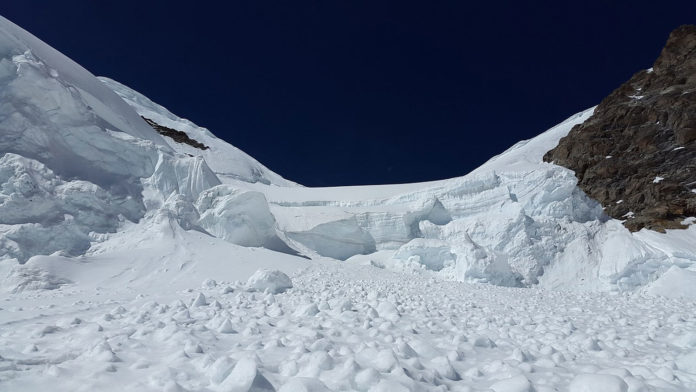Avalanches can be considered natural disasters when snow rapidly slides, tumbles, or flows down a mountain. Having several causes, the avalanche behavior has fascinated physicists.
The behavior of scientists can give insights about many other systems, not least of which is how snow falls down a mountainside.
To get a clue on it, it is essential to understand how avalanches work? To do so, scientists used microscopic arrays of nanomagnets that provide the first experimental demonstration of a classic theoretical model, known as the ‘one-dimensional random field Ising model.’
For the experiment, scientists set up the arrays of nanomagnets in the lab. The nanomagnets were a few millionths of an inch in dimension. They interact with each other just like two refrigerator magnets put close together.
The array is first initialized so that, in alternating rows, half of the nanomagnets had the north pole pointing up and half had the north pole pointing down.
They then used a large electromagnet to apply a magnetic field to the array that causes a fraction of the nanomagnets to flip their poles and magnetically align in the other direction. A magnetic force microscope was later used to detect the changes.
They found that the magnet poles flip in clusters along the rows of the arrays, with each microscopic flipping begetting another group of magnets to flip poles – the way that an avalanche works.
Peter Schiffer, the Frederick W. Beinecke Professor of Applied Physics, said, “That’s a key point because when one flips, that adds an extra impetus on the next one. What we measure is the distribution of these clusters that have flipped. How many small ones? How many bigger ones? And then the distribution of those clusters is what we compare to the model, which predicts how those clusters should be distributed.”
This is the first time that scientists accurately reflect the random field Ising model in one dimension. It mainly involves things that can be in one of two states – in this case, things that are either pointing up or pointing down.
Also Read: Avalanche forecasting, public awareness can save lives
Schiffer said, “What the model predicts is what that distribution of avalanche sizes should be. And that’s what we see very cleanly – we measured the distribution of how the magnet poles flip, and it matches incredibly well what the expectations were.”
Journal Reference:
- N. S. Bingham, S. Rooke et al. Experimental Realization of the 1D Random Field Ising Model. DOI: 10.1103/PhysRevLett.127.207203
